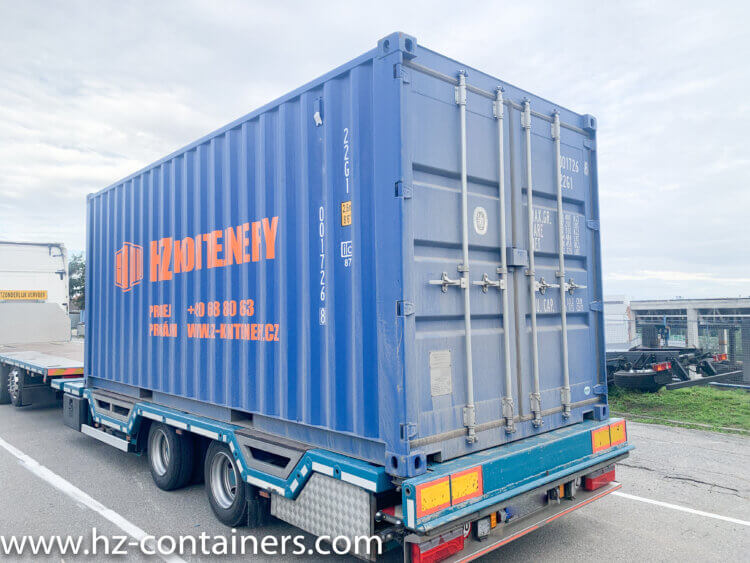Container loading
When buying a shipping container from us, loading the shipping container at a DEPOT worldwide is always included in the price.
However, it is important to note that container loading is possible only on semi-trailers adapted for transporting shipping containers.
The trailer must be equipped with so-called Twistlock locks. In the event that he transports the shipping container himself, he must follow these rules, which are the standard for the whole world. Otherwise, we cannot guarantee that the container will be loaded!
LOADING INTO A CLASSIC CANVAS TRAILER IS NOT POSSIBLE!
Why can’t the container be placed on a classic tarpaulin semi-trailer?
There are several reasons why containers cannot be loaded onto classic tarpaulin semi-trailers:
Load capacity and stability
The canvas semi-trailer is designed for the transport of light and bulky loads. Shipping containers can have a lot of weight and the trailer needs to be strong and stable enough to support them.
Cargo space
Containers have specific dimensions and shape that differ from normal loads transported on a tarpaulin semi-trailer. For the correct and safe placement of shipping containers, special equipment is needed, such as container bearings, twistlocks and hooks to hold them.
Safety when loading a shipping container
Containers must be properly secured and secured during transport to avoid damage or falling. Canvas trailers are not always equipped with such systems for fixing containers.
For these reasons, special semi-trailers, called container semi-trailers, are always used, which are designed and equipped to handle and transport shipping containers. These semi-trailers have a solid construction and special hooks or twistlocks to secure the containers and ensure their stability during transport. You can find what types of shipping containers are transported on our shipping container breakdown page.
How is the shipping container loaded?
Loading a shipping container onto a semi-trailer involves several steps and uses special equipment. Here is a general description of how loading normally occurs:
Preparing the container for loading
The shipping container must be ready for loading. This includes checking its condition, removing any obstacles or dangerous materials, and possibly attaching safety traverses that are used to fix the container on the trailer.
Preparing the trailer for loading the container
First, the trailer must be properly prepared for loading the container. It will be checked that the semi-trailer is in good technical condition and has sufficient load capacity for the container that will be placed on it.
The semi-trailer is then raised using a hydraulic or mechanical system so that the container can be placed on the semi-trailer. This creates a space between the container and the road where the trailer is placed. This space is important so that the container can be easily and safely placed on the trailer and ensure proper fixation.
Loading a shipping container onto a semi-trailer
The container is then moved onto a semi-trailer. This can be done using a container crane or other suitable handling machine.
Attaching the container
Once the container is on the trailer, it is important to secure it and secure it so that it does not move during transport. This is done using twistlocks that are placed on top of the container and inserted into the holes on the trailer for loading.
Checking security
After the container is attached, a check is made for proper storage and securing. It is important that the container is firmly and securely placed so that it does not move during transport.
After completing these steps and verifying the security measures, the semi-trailer with the loading of the shipping container can be ready for transport to the desired destination. It is important that loading is carried out by professionals to ensure proper handling of the container. And minimize the risk of damage or instability during transport.


